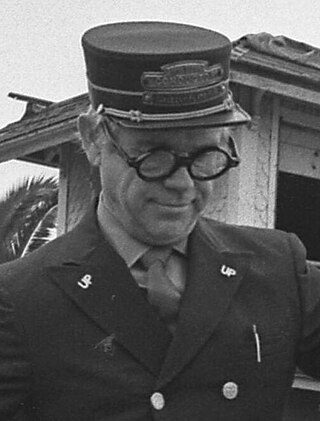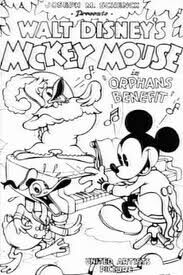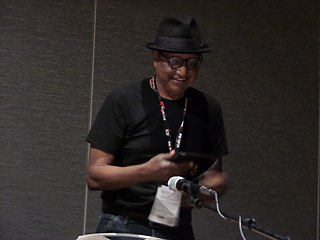Related Research Articles

The Mickey Mouse Club is an American variety television show that aired intermittently from 1955 to 1996 and returned to social media in 2017. Created by Walt Disney and produced by Walt Disney Productions, the program was first televised for four seasons, from 1955 to 1959, by ABC. This original run featured a regular, but ever-changing cast of mostly teen performers. ABC broadcast reruns weekday afternoons during the 1958–1959 season, airing right after American Bandstand. The show was revived three times after its initial 1955–1959 run on ABC, first from 1977 to 1979 for first-run syndication as The New Mickey Mouse Club, then from 1989 to 1996 as The All-New Mickey Mouse Club airing exclusively on cable television's The Disney Channel, and again in 2017 with the moniker Club Mickey Mouse airing exclusively on internet social media. It ended in 2018.

Mickey Mouse is an American cartoon character co-created in 1928 by Walt Disney and Ub Iwerks. The longtime icon and mascot of The Walt Disney Company, Mickey is an anthropomorphic mouse who typically wears red shorts, large yellow shoes, and white gloves. Inspired by such silent film personalities as Charlie Chaplin and Douglas Fairbanks, Mickey is traditionally characterized as a sympathetic underdog who gets by on pluck and ingenuity in the face of challenges bigger than himself. The character's depiction as a small mouse is personified through his diminutive stature and falsetto voice, the latter of which was originally provided by Disney. Mickey is one of the world's most recognizable and universally acclaimed fictional characters of all time.

Walter Elias Disney was an American animator, film producer, and entrepreneur. A pioneer of the American animation industry, he introduced several developments in the production of cartoons. As a film producer, he holds the record for most Academy Awards earned and nominations by an individual. He was presented with two Golden Globe Special Achievement Awards and an Emmy Award, among other honors. Several of his films are included in the National Film Registry by the Library of Congress and have also been named as some of the greatest films ever by the American Film Institute.

Theodore H. Osborne was an American writer of comics, radio shows and animated films, remembered for his contributions to the creation and refinement, during the 1930s, of Walt Disney cartoon characters.

The Walt Disney Studios, located in Burbank, California, United States, serves as the corporate headquarters for The Walt Disney Company media conglomerate. The 51-acre studio lot also contains several sound stages, a backlot, and other filmmaking production facilities for Walt Disney Studios's motion picture production. The complex also houses the offices for the company's many divisions, with the exception of Pixar Animation Studios, Lucasfilm, and 20th Century Studios, which remains on its namesake lot in nearby Century City.

Ward Walrath Kimball was an American animator employed by Walt Disney Animation Studios. He was part of Walt Disney's main team of animators, known collectively as Disney's Nine Old Men. His films have been honored with two Academy Awards for Best Animated Short Film.

Orphan's Benefit is an American animated short film produced by Walt Disney Productions in black-and-white. It was first released in 1934 and was later remade in Technicolor in 1941 under the corrected title Orphans' Benefit. The cartoon features Mickey Mouse and his friends putting on a vaudeville-style benefit show for a group of unruly orphans. It contains a number of firsts for Disney, including the first time in which Mickey Mouse and Donald Duck appear together, and it was the 68th Mickey Mouse short film to be released, and the sixth of that year. It was also the cartoon which had the first story to be written that featured Donald Duck, though it was the second Donald Duck short to be produced and released, after The Wise Little Hen.
Carl Robert Fallberg was a writer/cartoonist for animated feature films and TV cartoons for Disney Studios, Hanna-Barbera, and Warner Brothers. He also wrote comic books for Dell Comics, Western Publishing, and Gold Key Comics.

Wayne Anthony Allwine was an American voice actor, sound effects editor, and foley artist. He is best remembered as the third official voice of Mickey Mouse into English, and the first official casting following the establishment of Disney Character Voices International in 1988. To date, he holds the record for the longest-running actor to play Mickey Mouse, having held the role for 32 years. He was notably married to Russi Taylor, who voiced Minnie Mouse.
William Crozier Walsh was a film producer, screenwriter and comics writer who primarily worked on live-action films for Walt Disney Productions. He was born in New York City. For his work on Mary Poppins, he shared Academy Award nominations for Best Picture with Walt Disney, and for Best Writing, Screenplay Based on Material from Another Medium with Don DaGradi. He also wrote the Mickey Mouse comic strip for more than two decades. He died in Los Angeles and was interred in Glendale's Forest Lawn Memorial Park Cemetery.
Manuel Gonzales was a Spanish-American Disney comics artist. He worked on the Mickey Mouse comic strip from 1940 to 1981.

Disney Television Animation (DTVA) is an American animation studio that serves as the television animation production arm of Disney Branded Television, a division of Disney General Entertainment Content, which is a division of Disney Entertainment. The studio was originally established on December 5, 1984, by Gary Krisel during the reorganization and subsequent re-incorporation of Disney following the arrival of then CEO Michael Eisner that year.

Floyd E. Norman is an American animator, writer, and cartoonist. Over the course of his career, Norman has worked for various animation companies, among them Walt Disney Animation Studios, Hanna-Barbera Productions, Ruby-Spears, Film Roman and Pixar.
John Ryan Kinney was an American animator, director and producer of animated shorts. Kinney is the older brother of fellow Disney animator Dick Kinney.

John James MacDonald was a British-born American foley artist, voice actor, musician and conductor. He was the original head of the Disney sound effects department, and was also the 2nd official voice of Mickey Mouse from 1947 to 1976 and again in 1978 and 1987 after Walt Disney stopped playing the character and before Wayne Allwine became the third voice of Mickey in 1977.
When the Cat's Away is a Mickey Mouse short animated film first released on May 3, 1929, as part of the Mickey Mouse film series. It was directed by Walt Disney and animated by Ub Iwerks and Ben Sharpsteen. It was the sixth Mickey Mouse short to be produced, the third of that year. In this cartoon, Mickey and Minnie are the size of regular mice, and Tom Cat is the size of a person.

Squatter's Rights is a 1946 animated short film produced in Technicolor by Walt Disney Productions. The cartoon is about a confrontation between Pluto and Chip and Dale who have taken up residence in Mickey Mouse's hunting shack. It was the 119th short in the Mickey Mouse film series to be released, and the only one produced that year.

Mickey's Steam Roller is a 1934 animated short film produced by Walt Disney Productions and released by United Artists. In the cartoon, Mickey Mouse is the driver of a steamroller which is hijacked by his two nephews. It was directed by David Hand and features the voices of Walt Disney as Mickey and Marcellite Garner as Minnie Mouse and Mickey's nephews. It was the 67th Mickey Mouse short film to be released, and the fifth of that year.
The Picnic is a 1930 American animated short film directed by Burt Gillett and produced by Walt Disney. It was first released on October 9, 1930, as part of the Mickey Mouse film series. It was the twenty-third Mickey Mouse short to be produced, the eighth of that year.
References
- ↑ Obituaries : Larry Clemmons; One of Disney's First Writers for Animated Films - latimes Retrieved 2018-12-16.
- 1 2 "Obituaries : Larry Clemmons; One of Disney's First Writers for Animated Films" . Los Angeles Times . July 28, 1988. Retrieved March 14, 2015.
- ↑ data.bnf.fr
- ↑ Sandra Brennan (2016). "Larry Clemmons - About This Person - Movies & TV - NYTimes.com". Movies & TV Dept. The New York Times . Archived from the original on January 22, 2016. Retrieved March 14, 2015.
- 1 2 "'Mouse in Transition': Larry Clemmons Chapter 2". www.cartoonbrew.com. 28 May 2014. Retrieved March 14, 2015.